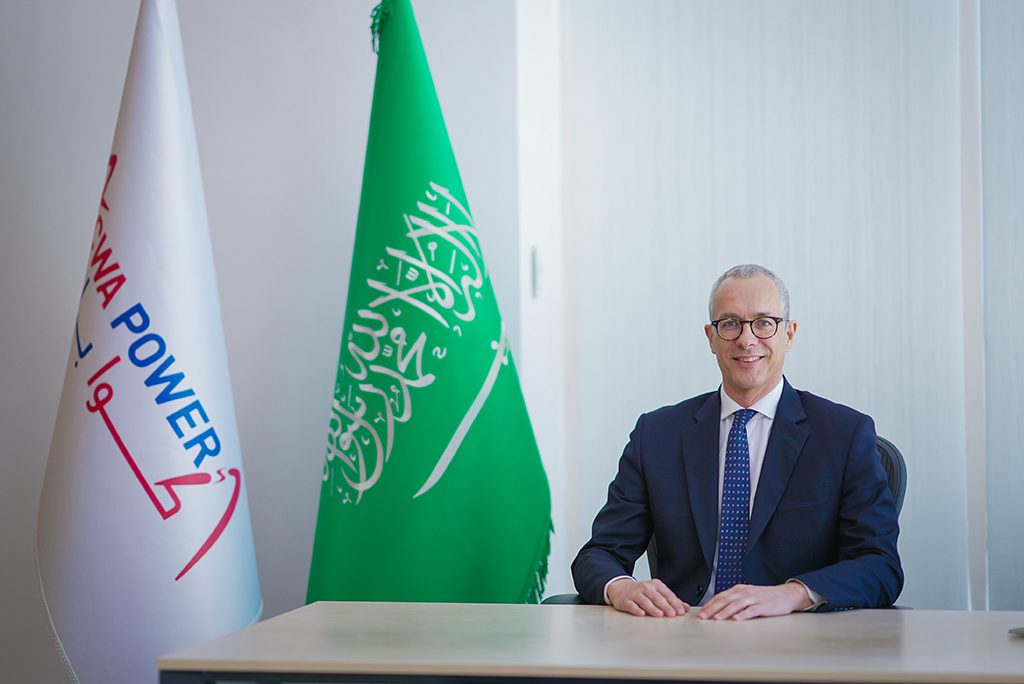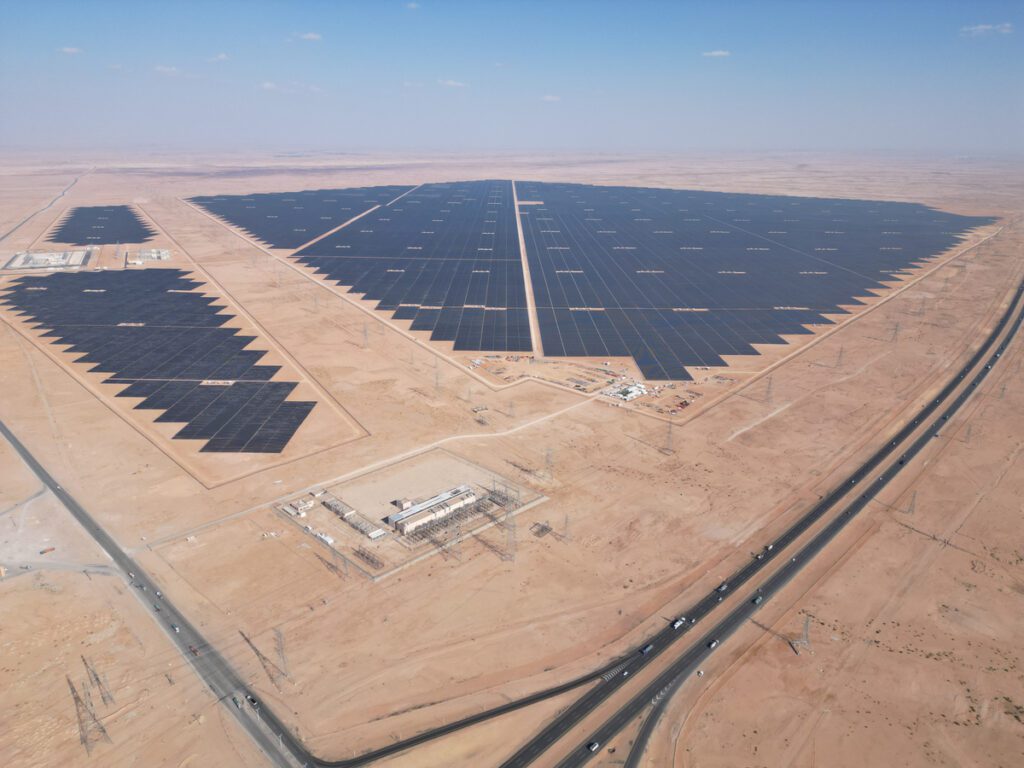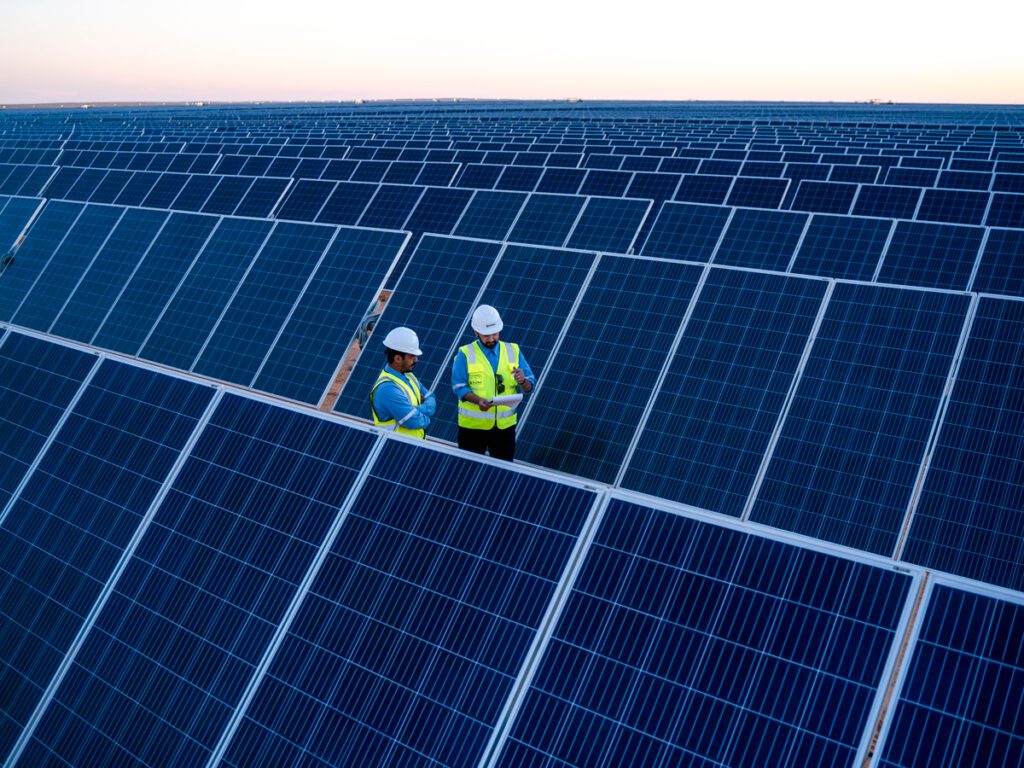ACWA Power: Crossroads for Exponential Growth in Power and Water
In 2002, the government of Saudi Arabia moved to step up the private sector’s role in the kingdom’s economy by opening the production of power and desalinated water. Saudi firms Abunayyan Trading Co., Abdulkadir Al Muhaidib & Sons Co., and MADA Group for Industrial and Commercial Development sensed a tremendous opportunity, forming ACWA Power Projects to develop and invest in power generation and desalinated projects. In 2008, the company formally evolved into ACWA Power, and over the past two decades, it has rapidly expanded.
Today, ACWA Power is an energy behemoth with 4,000 employees. Its operations span 81 assets in 12 countries in the Middle East, Africa, and Asia. Along with a privately owned power production portfolio of 55.1 GW of thermal and renewable power, it has cultivated a foothold in water production—it is the world’s largest private water desalination company, with a capacity of 7.6 million cubic meters per day.
The company is also a notable first mover in the the gigascale green hydrogen production business. Its first project developed with Air Products and NEOM, now under construction and slated to begin operations in 2026, is the 4-GW NEOM Green Hydrogen Project—the world’s largest utility-scale commercially based green hydrogen facility. In November 2023, ACWA broke ground on its second green hydrogen project in Uzbekistan, which will be capable of producing 3,000 tonnes of green hydrogen per year and, ultimately, 500,000 tonnes of green ammonia a year, utilizing wind energy. A third project with a capacity of 600,000 tonnes per year of green ammonia, unveiled in December, is under development in Egypt.
In an interview with POWER during CERAWeek by S&P Global, ACWA Power CEO Marco Arcelli shared the company’s unique transformational journey under Saudi Arabia’s Vision 2030, an ambitious roadmap to promote economic diversification, global engagement, and enhanced quality of life. Arcelli, who took the reins from CEO Paddy Padmanathan in 2023, suggests the company is poised for a strategic evolution through its innovative develop-invest-operate-optimize business model. The interview has been edited for clarity and brevity.

POWER: ACWA Power seems to have undergone a dramatic transformation over the past decade. How would you describe the current opportunity for further growth, particularly to leverage the socio-economic dynamics presented by Vision 2030?
Arcelli: It’s a once-in-a-lifetime opportunity to really be in the middle of such a change with all this enthusiasm, energy, and passion, and this leadership vision, dialogue with investors, and quick decisions. ACWA Power is in the middle of it because it’s one of the biggest companies in the Middle East—it’s a poster child of Vision 2030. So, if you look at the trajectory over the past 20 years, you can see that for a long time it grew by one-two then three to five projects a year. Then in the past four-five years—with the start of Vision 2030—it exploded. To give you an idea, we had three or four financial closes a year four or five years ago. Last year, we had 12, this year almost 20. We had four or five projects under construction a year, and today, we have 20.
The growth is also thanks to the fact that we have been assigned a task by [Saudi Arabia’s Public Investment Fund (PIF)] to deliver 70% of the renewable energy program in the country. I think that through that, and the opening in Saudi Arabia, we also secured a lot of opportunities internationally. It’s a big sign of transformation that is going on. Through our ingenuity, we achieve the lowest energy tariffs and water tariffs in the industry, which makes a lot of governments call us to say come and do something here.
One of my core mandates is to institutionalize the company and make it more organized to support such massive growth. It’s even more important because the strategy we have put in place is to triple the size of the company by 2030. At the same time, you need to develop and elevate people because you need to delegate more and so on, and you cannot always hire from the outside because otherwise, you renounce having your own cultured systems of doing this. So, we’re now at this inflection point. We think the past year is already one big achievement in this sense. We put into the portfolio more than 10 GW of power and 1.4 million cubic meters of water desalination, and we launched the second green hydrogen project. Altogether, we added about 20% to the size of the company last year.
POWER: ACWA Power operates on a unique develop-invest-operate-optimize model. Can you elaborate on how this model positions ACWA distinctively in the energy market and whether it signals a shift toward utility operations?
Arcelli: We continue to be an independent power producer—so we’re not going to turn into a utility. We continue to basically develop. One of the big advantages we have there is we are an enabler. So, for every dollar that we invest, we mobilize $10—$7 will be project financing, $1 will be our equity, and $2 will be the equity of our partners. So, we bring in technology from around the world, investors from around the world, and financing from around the world, working with [development finance (DFi)], commercial banks. So basically that is the development part, where ingenuity is one of the technical solutions to the structure and optimization.
And then we build, we oversee the construction. In this model, typically, we have engineering, procurement, and construction (EPC) contractors, and we’re putting a lot of focus on the whole supply chain. We created a team focused on strategic sourcing of equipment and EPC contracts. Then, we operate through a company called NOMAC, a 100% ACWA Power-owned operation and maintenance company that basically operates all the assets in our portfolio.
Of course, there’s always the optimization afterward, which can be operational—to continue to look for evolution with technology that you can then apply—or improvement in availability and reliability. It can also be financial—it can be refinancing and farming down on some positions.

POWER: What kind of market opportunities or regions does ACWA consider the most promising?
Arcelli: Of the growth that we need [to execute], Saudi Arabia will be probably around 60%, with targets of 20 GW a year of renewables. [Targets also include] 7 GW a year of combined cycle [additions]—last year, we won 50% of those on tender. [They also include] battery storage, and then there will be some other opportunities in cogeneration, maybe decarbonizing some operations. That all together will be about 60% of our growth.
The second area is Central Asia, starting with Uzbekistan—and we’re now looking at other countries—where we’ve been very successful in having agreements basically to invest about $10 billion to $15 billion today—today, probably the largest investor in the country.
POWER: ACWA’s competitive stance relies on keeping power prices low. How does the company leverage technological innovation and strategic partnerships to maintain its competitive edge?
Arcelli: We scout the world to find the best suppliers, the best solutions, and also work with them to develop their products. So, for instance, we’re working with Fraunhofer, which is a research center in Germany on technologies to reduce the soiling on our panels. We’re working with suppliers from China to adapt their product to the high temperatures that we have in most of the countries where we operate. We’re working on innovative desalination technologies. We’re using artificial intelligence (AI) on our processes to optimize the operation to reduce the environmental impact, particularly the use of chemicals products that they require in the process. We bring them then to research centers in universities in Saudi Arabia and we pilot them on our plants.
I find the quality of infrastructure in Saudi Arabia amazing. There are a lot of researchers there, and there is a very close relationship with the industry. It’s a great model—you have the user, the research centers, you can test, and then you have people from around the world who can come. We hope that can also be a model that will incentivize localization in Saudi Arabia. It’s convenient to come and manufacture there directly rather than ship around the world, and then, it’s a great base along all the major shipping routes. The demand for infrastructure is massive, and Saudi Arabia can become really the center for these manufacturing plants.
By the way, with the decarbonization program in Saudi Arabia, as a supplier, it’s a great way to decarbonize your operations there. You can get your energy from green sources at the most convenient price in the world, and that gives you a competitive advantage.
POWER: As a leader in desalination and a pioneer in green hydrogen, where does ACWA Power see the biggest opportunities for growth in these technologies? How do you plan to expand your leadership in these areas?
Arcelli: Today, we’re already the largest private desalination company in the world, and we have built projects with the lowest cost in the world and the most innovative, with the combination of solar power and water desalination. We have all the skills, and we see that we are increasingly being called upon by governments around the world and authorities around the world to help them find a solution. Of course, today, the bulk of the industry is in the Middle East, and today we supply 20% to 30% of the population of Saudi Arabia, the United Arab Emirates, Oman and Bahrain. Now, we’re looking to expand from Northern Africa to the Far East, and potentially, we’re looking beyond that.
For green hydrogen, we’re probably the first mover in the industry because we’re the only company with two large projects under construction that are targeted for exports. One is the NEOM Green Hydrogen project [an $8.4 billion gigascale project under construction at Oxagon in Saudi Arabia’s NEOM region that will integrate up to 4 GW of renewable power to produce green ammonia at scale by 2026, developed together with Neom and Air Products]. We brought our competence in the renewables to hydrogen conversion and the contractual framework, where we achieved non-recourse financing for over $6 billion out of the $8.5 billion total investment.
It took us four years to develop that project and given the skills and the expertise that we have, when we started the second project [in Uzbekistan], it took us less than one year from starting to talk about it to groundbreaking. At that project, all the output will go to a local fertilizer company that is looking at that as a way to gain an advantage in the global markets to export into Europe. But considering that Europe has the Carbon Border Adjustment Mechanism, it poses a barrier, so unless you decarbonize you will be at a disadvantage to importing to the continent.

POWER: Given your global perspective and foothold on key emerging technologies, what would you highlight as the biggest challenges facing the power industry today?
Arcelli: I would say people because of the scale-up in the institutionalization that we need to do—we need to develop people from within. We have quadrupled the investment in development, and we basically have a model on four levels. The first level is a program that we have with IMD, a leading business school in Switzerland—this is for our top talent. Not only is it great for developing people but for bringing people together from different countries and functions across our operations—it’s a great way to break silos.
The second program is with a university in the UK. It’s important because we are an IPP, so we have a lot of project companies that run construction and operations of our business with partners, off-takers, the financing companies. It’s a specific skill that we’re developing increasingly internally. So, both on the commercial and technical sides, we have a program for the next layer of leaders.
The third layer is a graduate development program. We received more than 10,000 applications, and we selected 60 young graduates from around the world—mostly Saudi and Emirati nationals. We’re trying to develop this pipeline of local talent in our core countries. The last layer is more on the technical side of operations. We work with and support two colleges: the Energy-Water Academy (EWA) in Saudi Arabia and the Shirin College in Uzbekistan. The EWA Academy is a two-year program for young graduates who want to [cultivate careers] in operating level in the plants that we’ve developed. Last year we received 150,000 applications to join this program.
Where we are given the possibility by the host country to have bilateral negotiations for a large volume [build out], it allows us to take a long-term pathway rather than on an individual project or individual immediate need and think about how you create opportunities for the people in the country, the industry in the country, the localization in the country. We found that Saudi Arabia and Uzbekistan have been very visionary in that sense, and they trusted us basically to partner with them to work.
POWER: As the power sector undergoes a significant transition, what business challenges do you anticipate, and how can companies prepare to meet the evolving demands of clean energy production?
Arcelli: When I look at Africa, and particularly on the global side, the need for clean power and water is much bigger than the ability to develop. There are countries with a population bigger than Saudi Arabia with a total installed capacity that is less than one power plant there. It’s not that they don’t want it. Something is not working. So, we’re trying to bring everybody together. We’re talking with DFis to say you need to cover risks that the private sector cannot take so that you create an environment where private companies can accelerate the energy transition—we cannot really work with governments to the extent that they can—and then we create a great ecosystem of suppliers and partners.
We’re trying to work more with philanthropy and impact investments so that they come in with concessional financing for this infrastructure. We’re talking with partners to convince them, you know, with all their pledges for net zero, when I talk to them, they say they only invest in OECD countries. But 90% of the growth and the need in in non-OECD countries. So, we’re trying to act as a catalyst. I think it will take not just an aspiration but a lot of commitment around the world.
POWER: Drawing from your experience, what advice would you offer to leaders of emerging companies in the energy sector to navigate the complexities of today’s energy landscape?
Arcelli: The success that I see in the countries where we operate all has something in common: strong leadership . First, you have vision, and second, you have dialogue with investors. Each one can have its own goals, but you want to make sure you bring them together constructively. Finally, quick decision-making. If you have these three, you can typically do more and faster.
—Sonal Patel is a POWER senior editor (@sonalcpatel, @POWERmagazine).